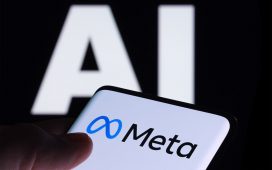Most articles and reports on “digital marketing” are by consultants, digital agencies and media owners but articles and point-of-view from marketing practitioners and brand owners are relatively fewer. With many “old economy” brands now starting their “digital marketing” journey, here are a few things I learnt – that your digital agency may not tell you.
There is no such thing as “Digital Marketing”
A majority of what’s peddled as “digital marketing” is advertising in the digital medium. Using the term “digital marketing” insinuates it’s distinct or even divergent from the rest of your marketing communications efforts. Young marketers proudly flaunt the badge of “digital marketer”; conceptually it’s no different from calling yourself a “magazine marketer”. While the tools for advertising on digital differ from, say television, and needs specialists for planning and execution, the fundamental tenets of brand marketing and advertising remain true even for “digital marketing”.
But the greater inherent danger in using the term “digital marketing” is in the creation of silos within your marketing team. In many organizations, MarComm Managers plan and execute campaigns on television, print and other so called “traditional mediums”, while the Digital Manager plugs in with his (or her) plans for digital. When it’s the same consumer you are targeting – online or offline, why create digital and non-digital schisms? This does not undermine the need for digital specialists in your marketing team, you just need to define roles appropriately to integrate your Marcomm efforts.
Ask the KKH question
The “digital marketing” alphabet soup may seem overwhelming, but as you begin it’s critical to determine the role of the medium in your consumer journey and hence what you want to achieve – Karnaa Kyaa Hain – KKH? Answers to KKH may be different for your industry and brand– it’s what you define as your business and brand goal. And It’s not static, as the role of the internet in your consumer journey changes, so should your answer to the KKH question. Use this to guide your future course and not some newfangled fad from some global case study.
“It’s OK, it’s for digital only” – is not OK
All advertising efforts, irrespective of medium, should stay consistent to your brand guidelines. Don’t upload or endorse shoddy poorly produced “content” that doesn’t meet your guidelines to your brand channels (e.g. brand YouTube channel). This is applicable to even “user generated content” – created by some over enthusiastic customer. There is nothing like “it’s OK, it’s for digital only”. All marketing communications, irrespective of medium, reflects how consumers see you and should aid your efforts in building distinctive brand assets.
Human behavior doesn’t follow the Moore’s law trajectory
The evolution curve for computing power and introduction of new technologies is steep, but curves for adoption of new tech by people and habit changes is comparatively flatter. The folks pitching ‘new and shiny digital tech’ are most likely technophiles and early adopters; don’t assume the same for your consumers. While this doesn’t mean that you stay a laggard; it simply means you need to find the right balance.
Sold as a sniper gun but fired like a machine gun.
Sharp targeting and reducing advertising wastage are touted as the raison d’etre for “digital marketing”. Many digital agencies pitch ‘sniper gun’ solutions, tools with the uncanny ability to target the “right consumer at the right time with the right message”. Executing digital campaigns, like any other medium, needs monitoring. Don’t assume that the 320×480 banner you approved goes into some fill-it-shut-it-forget-it machine. Potential impressions (“media space”) for advertising on the internet is (in theory) infinite, without high quality execution across ad formats and sizes, the right CTAs (Call-to-Action) for each ad unit, regular monitoring and checking each targeting and campaign parameter it’s very easy to slip into “machine gun mode”.
Cookies don’t buy, people do
Digital agencies spend a lot of time talking about retargeting cookie pool, device IDs, third party data etcetera; it may be worth remembering that all marketing efforts are aimed at real people. Real people buy, the cookie doesn’t.
Beware of the tendency to view people going about their business – your target customer – as mere cookie pools or device IDs meant to be targeted. Holding this human perspective will help you create more effective advertising.
Imagine real life or offline equivalents
Sometimes it’s useful to seek real life or offline advertising parallels to make sense of the alphabet soup and get a sense of balance.
For instance, what’s popularly called “sponsored native content” is conceptually like an advertorial in Print where such an article is labelled an advertorial and printed in a different font. However, many digital publishers have no such scruples about “native content” and many digital agencies don’t want to entertain the possibility of users conned into clicking on such “ad units”; instead they celebrate high response rates to “sponsored native content”.
Or, when you hear “50% viewability is OK”, think about being OK with half of your Billboards hidden behind roadside trees.
By the way, the real world may have a name for “remarketing” – stalking.
Remember Goodhart’s Law
Most digital advertising analytics stay trapped in a haze of CTRs and other minutiae with lengthy campaign review discussions on actions to improve metrics like CTRs. It may be useful to remember Goodhart’s law; when a measure becomes a target, it ceases to be a good measure. When campaigns are optimized for the said metrics alone, your overall goals and business outcomes recede beyond sightlines.
Measure what matters
Metrics like number of social media followers or likes and other fancy analytics that look good on paper but add little or no value to your business or brand goals are vanity metrics. If you do not understand how a metric reflects performance versus your goals, it’s probably not worth looking at. Identify metrics in line with your business or brand goals – it’s OK for it to be a very short list. As it’s popularly stated; not everything that’s important to marketing can be measured and not everything that can be measured is important. Create two sets – operational metrics and business metrics. Operational metrics like CPC (cost-per-click) or CPCV (costs-per-completed-view) help you keep an eye on performance and efficiencies. Business metrics like incremental campaign reach (over say, television), number of leads generated, units sold, CPL (cost-per-lead) or CPA (cost per acquisition) reflects performance versus brand or business goals.
Demonstrate the business value of your marketing efforts on digital to management; by sharing how business processes are being updated to keep up with consumer behavior, share business metrics, don’t bother them with operational metrics and long-winded explanations about CTR trends; it’s simply not be worth their while.
Lies, damn lies, statistics and percentages
Many digital case studies claim massive performance improvements, a typical headline may read “200% improvement”. However, when you deep-dive, you may find it refers to CTRs improving from 0.3% to 0.6%. Mathematically, of course, it’s indeed a 200% improvement, but 0.6% means six in one thousand clicked on the banner – a massive increase from 3 in a one thousand. (and please don’t seek to understand erroneous clicks or other potential misattributions)
Throwing tech at every problem is not the only solution
Advanced technology like ML, AI or Blockchain, sometimes, may be solutions in desperate search of a problem. Throwing tech at every business or brand problem may not the only solution; it’s useful to keep asking the question KKH?
Stay clear of the Martech Arms Race
There are thousands of digital tools and technologies with many more launched each day. Many discussions about Mar tech or Ad tech turn into comparisons of tools deployed. And God forbid, if you haven’t adopted the latest from the Ad tech alphabet soup, you are made to feel like a marketing Neanderthal.
The Martech arms race may be the new ‘mine is bigger than yours’. While no Luddite is a marketer, absolute clarity of KKH and staying focused will help you pick the tools you need, while ignoring the ones you don’t.
When in doubt remember what Warren Buffet said.
Some tools and technologies digital agencies and tech service providers pitch may seem very complex. It is vital for you – the marketer – to understand the solution at its conceptual level and what your consumers will experience. But if answers to your questions of ‘what the solution does’ seems hidden behind a thick haze of acronyms, highly technical responses and obfuscation, it may be useful to follow Warren Buffet’s advice – “Never invest in a business you cannot understand.” (caveat, Buffet said it in a different context)
Beware of Shree 420
Ad fraud is rampant. Period.
You simply need to keep asking the right questions and take measures to minimize your losses to best extent possible. Also, when faced with out of the norm metrics; make sure to rule out the possibility of Shree 420.
Be an open-minded skeptic
And finally, be an open-minded skeptic. As Carl Sagan describes it, aim for that exquisite balance between two conflicting needs; the most skeptical scrutiny of all hypothesis served and at the same time a great openness to new ideas.
Disclaimer: The views expressed in the article above are those of the authors’ and do not necessarily represent or reflect the views of this publishing house. Unless otherwise noted, the author is writing in his/her personal capacity. They are not intended and should not be thought to represent official ideas, attitudes, or policies of any agency or institution.







